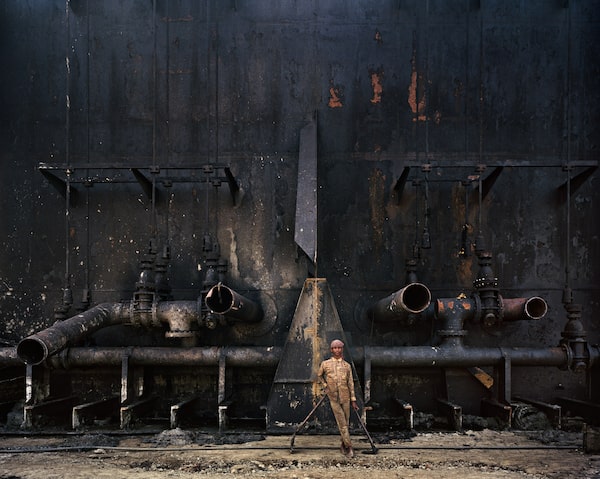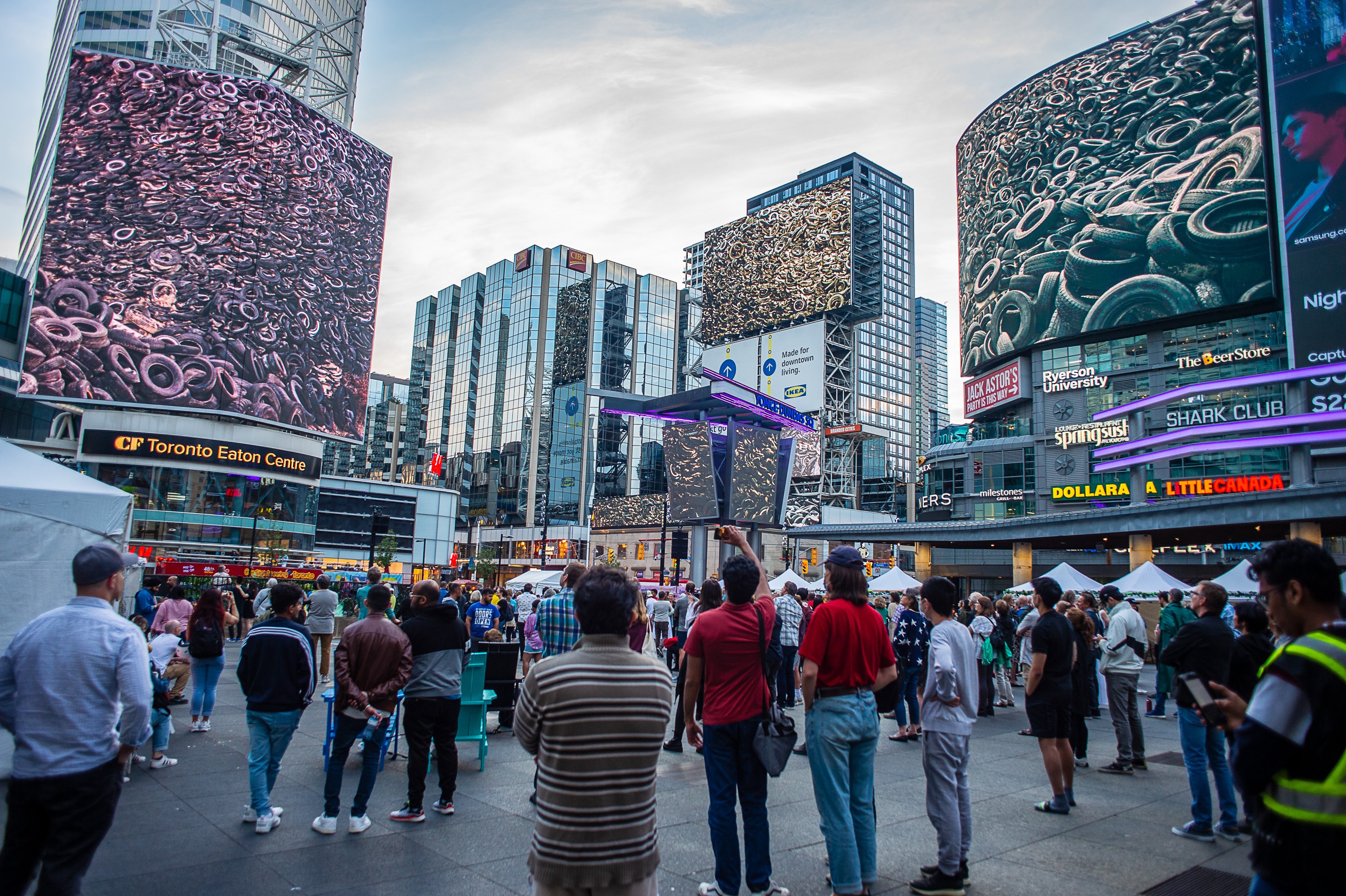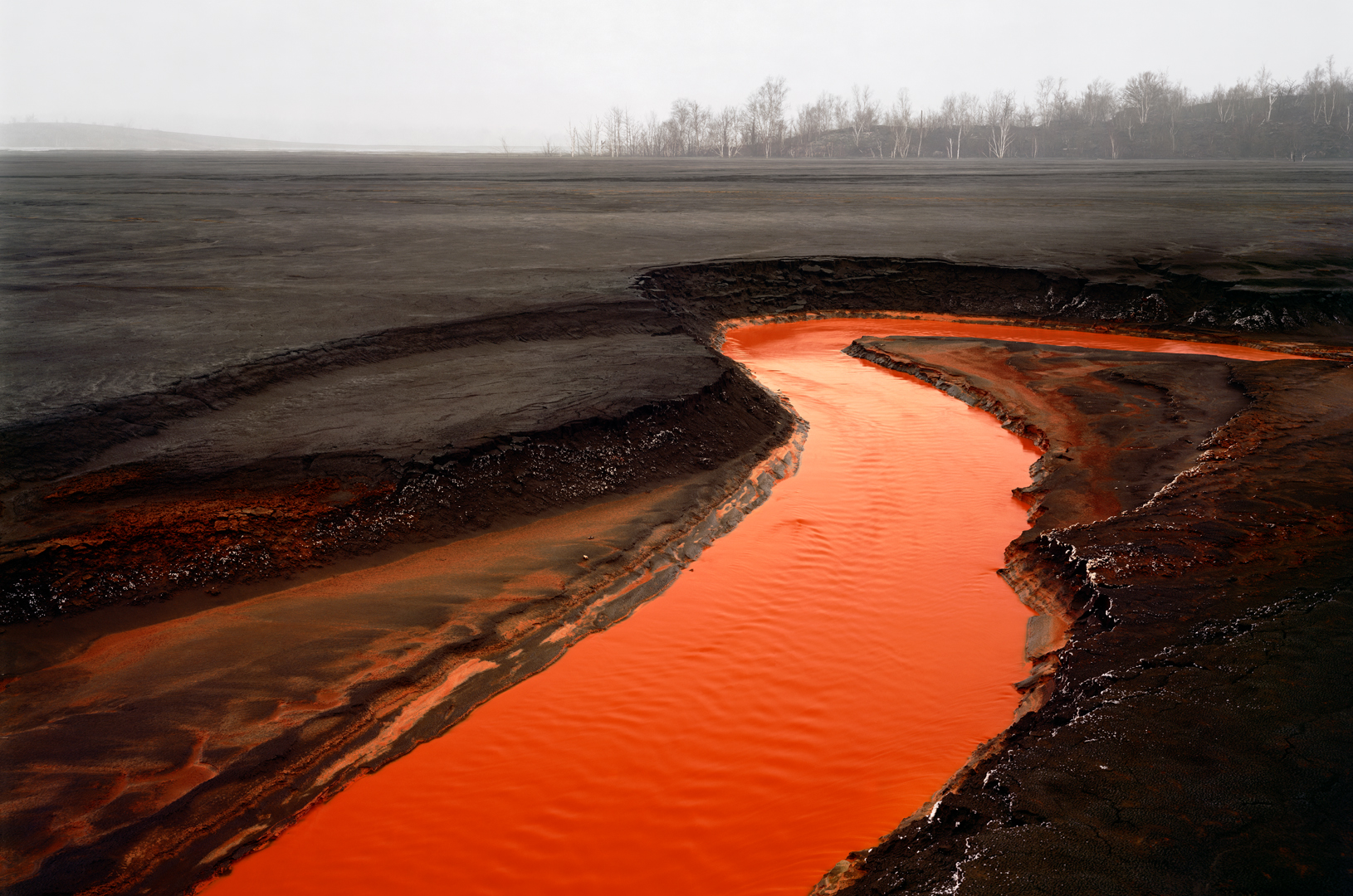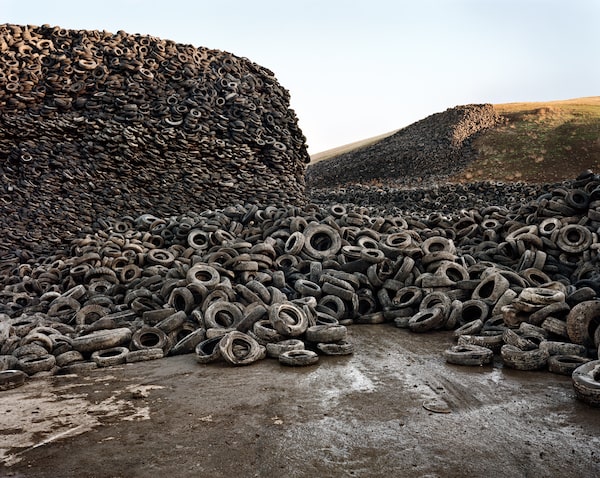
Shipbreaking #23, Chittagong, Bangladesh, 2000.© Edward Burtynsky, courtesy Nicholas Metivier Gallery, Toronto
The boy on the screen leans against his metal tools in Chittagong, Bangladesh, to the sound of a warped orchestra. He’s dwarfed by the blackened hull of a ship looming behind him. It’s no longer being covered by insurance, so somebody, somewhere, has to take it apart. He got the job.
The hazardous working conditions he endures are propped up by the same developed countries where his photograph might be viewed, as Western shipowners often outsource their shipbreaking to Asian countries such as Bangladesh, exploiting cheap labour and a lack of workplace regulation.
“I think of humanity like a big ship on the ocean,” Canadian photographer Ed Burtynsky said. “This is what we leave in our wake.”
The Chittagong photograph is among the most memorable of In the Wake of Progress, Burtynsky’s new immersive film experience that premiered at Yonge and Dundas Square in Toronto on June 11. This marked the first time in the square’s history that its two dozen outdoor screens performed as one.

The 22-minute film opens June 25 as an installation for a three-week run at the Canadian Opera Company Theatre. The audience will be surrounded on three sides by Burtynsky’s iconic aerial photos and videos, projected onto 30-foot screens and set to a monumental soundtrack.
The film forces the audience to reckon with the effects of industry – both on the land and on people far away – from resource extraction to refinement, manufacturing and shipping, waste and, eventually, the return of nature. Those familiar with Burtynsky’s work will recognize his iconic scenes of nature ravaged by human intervention.
“We’re all incriminated,” Burtynsky said during an interview at his Toronto studio. “Nobody is outside of this.”


The project started more than two years ago, Burtynsky said, when the Luminato Festival asked him to create a retrospective film highlighting his 40-year career. His team quickly got to work. But when the pandemic started in 2020, it became clear that a full-scale launch would have to wait. Over the next two years, Burtynsky and his team gradually shaped the 850 photographs pinned to a board into a narrative combining still and video footage.
The setup of the screens was a conscious choice. They are essential in mimicking the world around us, said Bob Ezrin, a Canadian Music Hall of Fame-inducted producer who helped shape the project. “I only wish that we had an even bigger screen,” Ezrin said.
At one point in the film, the audience is surrounded by the circular stamps of pivot irrigation, where 200-foot spray arms have circled a central axis and left rings in the middle of a dusty landscape, hundreds of meters across. When seen in 2-D, the circles look like modern art. But when lifted to frame the audience, they become glaring eyes with pinpoint pupils.
Ed Burtynsky at his studio, standing in front of a projection of his latest work, 'In the Wake of Progress.'Eduardo Lima/The Globe and Mail

Oxford Tire Pile #5, Westley, California, 1999.© Edward Burtynsky, courtesy Nicholas Metivier Gallery, Toronto
Burtynsky recalls a moment last summer after the team had finished a run-through of the film late at night for the Dundas Square premiere. His lush, mossy forest shots were, one by one, replaced by the fashion ads which usually plaster the Square. “It went from the poetic to the profane. All these models and runways,” Burtynsky recalled. “It was grotesque.”
Later, the project was extended to include the interior installation at the Opera Company, and Toronto sound designer Phil Strong was brought in to create custom music to accompany the film. At one point during composition, Strong asked for a list of locations for all the images included in the film, but in the end, he said, he decided to keep the audio free of cultural references, opting instead for a ‘universal’ ensemble featuring string instruments and synthetic sounds.
This also allowed Strong to fit the music to the visuals. Audiences will recognize the film’s climax, underpinned by a wailing crescendo: a glowering pot of molten metal, part of the metal manufacture process. It bubbles and flames, surrounded by darkness. “It’s a bit like being in Hell,” Strong said.


Wordless vocals provide a transcendent backdrop to the film’s narrative, many sung by waseskwan iskwew, known professionally as iskwē, who is Cree Métis from Treaty One Territory, born and raised in Winnipeg. She said her vocals reflect the feelings she had watching the film herself: chaos, fear, anxiety, and sense of dread.
But at other points, she said, the music expresses hope. At the beginning of the film, her traditional hand drum song ricochets between the trees onscreen, a testament to human’s universal connection to nature. At the film’s close, iskwē's atmospheric vocals swim in the tow of rivers rushing over deltas, glowing turquoise and navy tendrils like the mountains painted by Lawren Harris.
“Water is self-healing,” Burtynsky said. “And biodiversity is still with us, we still have it in our midst. But it’s not guaranteed.”
The interior installation is open Thursdays through Sundays from June 25 until July 17.




 Irene Galea
Irene Galea